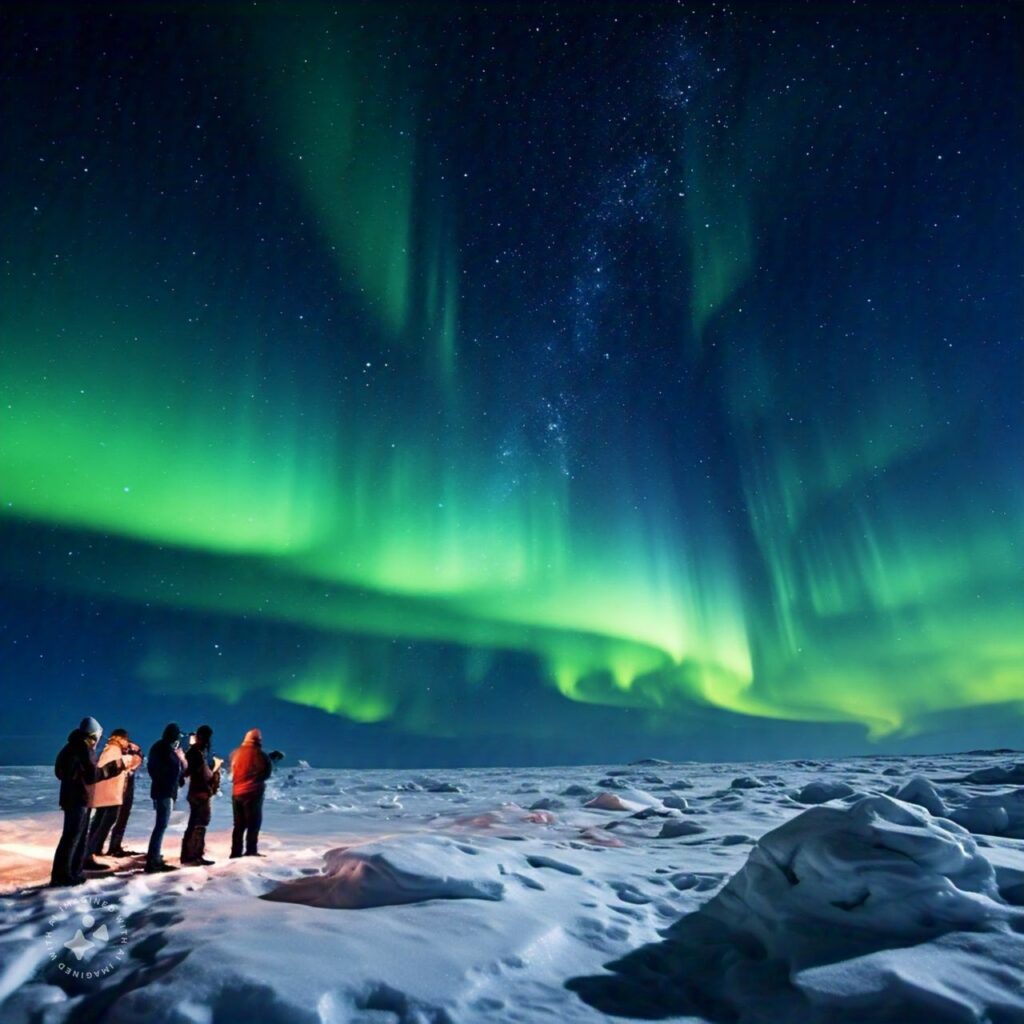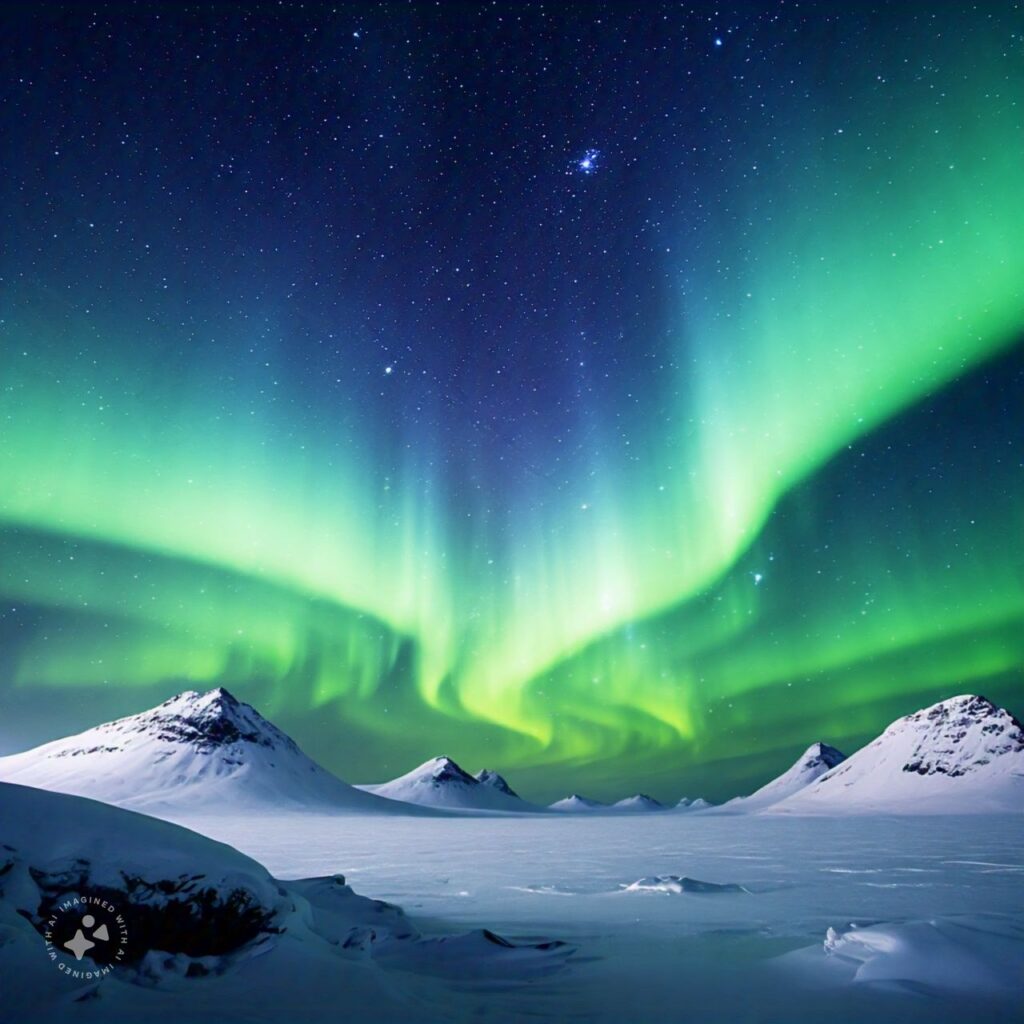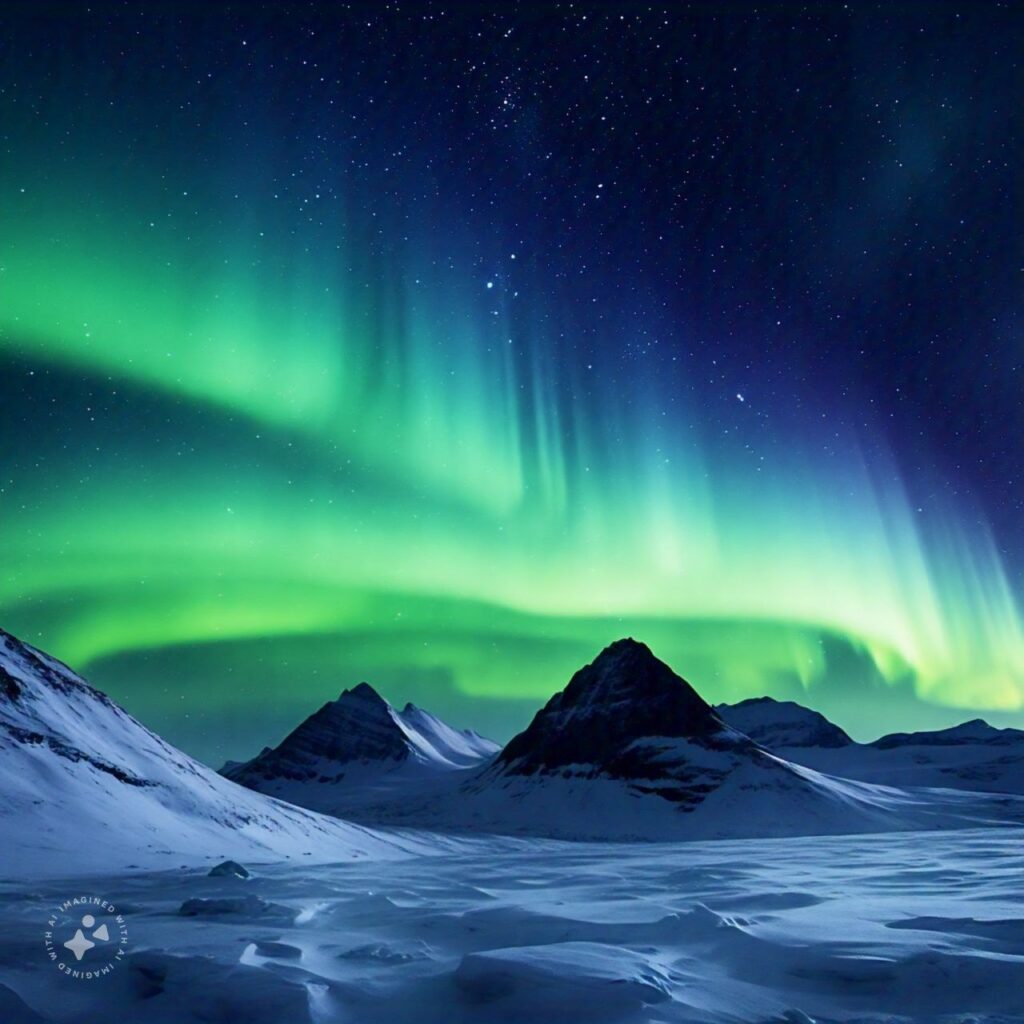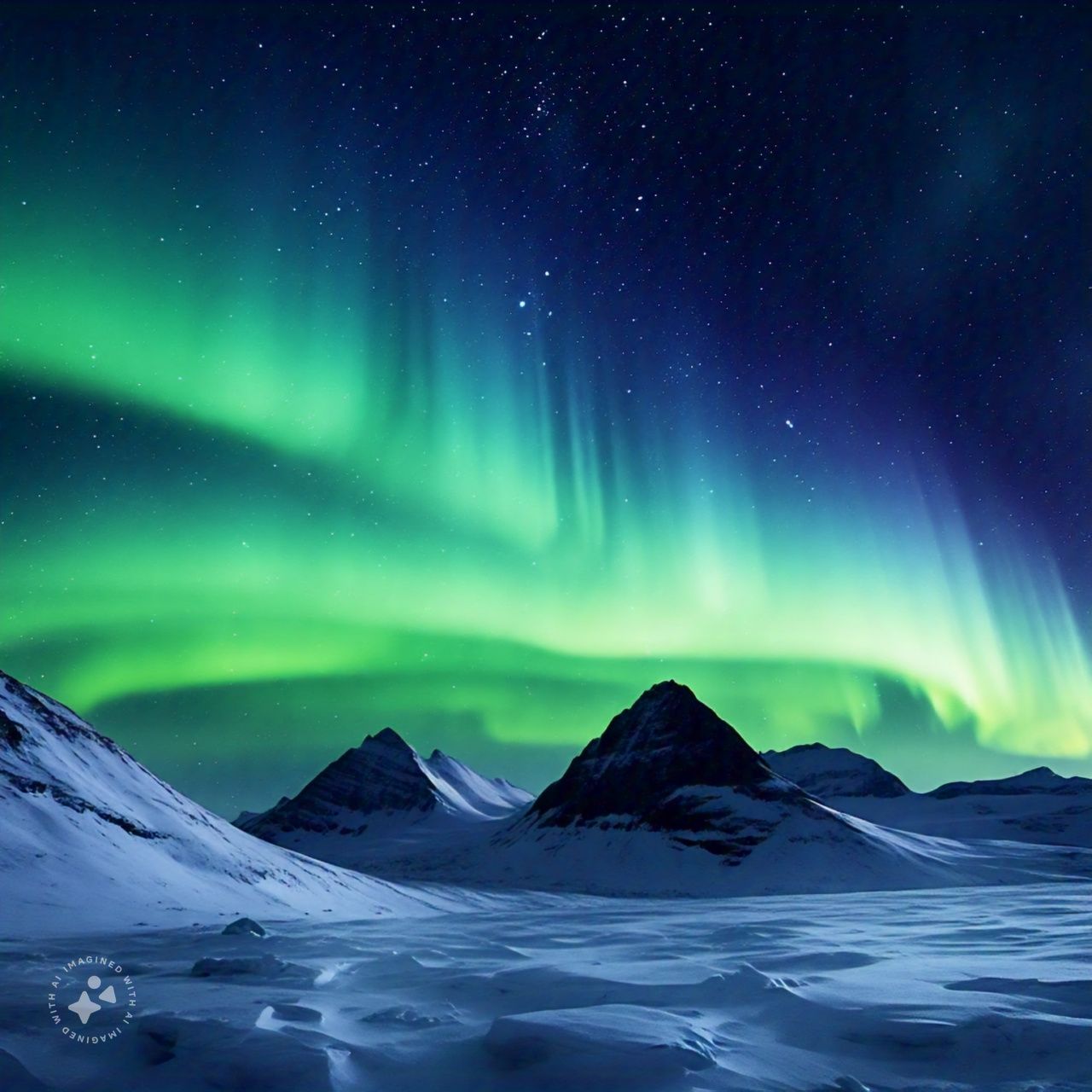The Northern Lights, or Aurora Borealis, are one of nature’s most stunning and mysterious phenomena, captivating millions of people each year with their mesmerizing dance of color across the night sky. These ethereal lights, often appearing in shades of green, purple, pink, and red, are not just a spectacle of beauty but also a scientific marvel that has fascinated people for centuries.
Visible primarily in the polar regions, the Northern Lights have been the subject of myth, legend, and scientific curiosity. The lights have inspired awe, cultural stories, and wonder across many civilizations, and their scientific explanation is a fascinating tale of solar winds, Earth’s magnetic field, and atmospheric particles.
In this article, we will explore the origin, scientific explanation, cultural significance, and best places to experience the breathtaking spectacle of the Northern Lights in the Arctic skies.

What Are the Northern Lights?
The Northern Lights are a natural light display that occurs when charged particles from the sun, known as solar winds, interact with the Earth’s magnetic field and collide with the gases in our atmosphere, primarily oxygen and nitrogen. This interaction releases energy in the form of light, creating the stunning and colorful display visible in the night sky.
The phenomenon is most commonly observed in regions near the magnetic poles, where the Earth’s magnetic field lines converge, directing the solar particles toward the poles. When these solar winds collide with atmospheric gases, the gases become excited and release energy in the form of photons, creating visible light.
The colors of the Northern Lights are determined by the type of gas involved in the collision and the altitude at which it occurs. Green is the most common color, produced by oxygen at around 100 kilometers above the Earth’s surface. Red, blue, and purple can also appear depending on the specific gases and the altitude of the reaction.
The Science Behind the Aurora Borealis
The Aurora Borealis occurs when charged particles from the solar wind interact with the Earth’s magnetosphere. Here’s a simplified breakdown of the process:
- Solar Wind: The Sun continuously emits a stream of charged particles, known as the solar wind. These particles travel through space at high speeds and eventually reach the Earth.
- Earth’s Magnetic Field: As the charged particles approach the Earth, they are drawn toward the planet’s magnetic poles, which act like a giant magnet. The Earth’s magnetic field is strongest near the poles, guiding the particles into the atmosphere.
- Collision with Atmospheric Gases: As the particles collide with the gases in the Earth’s atmosphere, particularly oxygen and nitrogen, the energy released in these collisions causes the gases to emit light.
- Color Variations: The colors depend on the type of gas and the altitude of the collision. For example, oxygen at higher altitudes (above 150 km) emits a red or purple light, while at lower altitudes (100 km), it creates a green light. Nitrogen can emit blue or violet hues.
This light show occurs in bands or curtains, with the shapes and patterns constantly changing as the solar wind interacts with the Earth’s atmosphere.

The Best Places to See the Northern Lights
While the Northern Lights can occasionally be seen in many parts of the world, there are certain regions where the phenomenon is more frequent and visible. The best places to see the Northern Lights are located near the Arctic Circle and the magnetic poles, in countries such as Norway, Sweden, Finland, Iceland, Canada, and Alaska.
Here are some of the top destinations to witness this natural light show:
1. Tromsø, Norway
Located above the Arctic Circle, Tromsø is one of the best places in the world to see the Northern Lights. The city is known as the “Gateway to the Arctic” and offers clear, dark skies ideal for viewing the aurora from late September to early April.
2. Abisko, Sweden
Abisko National Park in Sweden is considered one of the most reliable locations for observing the Northern Lights due to its unique weather conditions. The region is known for its clear skies and low precipitation, providing excellent chances to see the aurora.
3. Reykjavik, Iceland
Iceland is another prime location for the Northern Lights. While the lights can be seen from Reykjavik, venturing into the Icelandic countryside away from city lights offers even better chances. The dark winters provide long hours of darkness, perfect for aurora viewing.
4. Fairbanks, Alaska, USA
Fairbanks, located in Alaska, offers some of the best aurora viewing in the United States. With its proximity to the Arctic Circle, Fairbanks sees the Northern Lights from August to April, with peak visibility during the colder months of October to March.
5. Yellowknife, Canada
In Canada’s Northwest Territories, Yellowknife is often called the “Aurora Capital of North America”. Due to its location directly under the auroral oval, Yellowknife offers frequent sightings of the Northern Lights throughout the winter months.
6. Rovaniemi, Finland
The capital of Lapland, Rovaniemi, offers stunning views of the Northern Lights, especially in winter when the snow-covered landscape provides a beautiful contrast to the colorful lights. Visitors can also enjoy activities like sledding, snowshoeing, and visiting Santa Claus Village while watching the aurora.

Cultural Significance of the Northern Lights
For centuries, the Northern Lights have been a source of fascination, awe, and mystery across various cultures. Ancient peoples have interpreted the lights in different ways, often weaving them into myths, legends, and spiritual beliefs.
In Norse Mythology
In Norse mythology, the Northern Lights were believed to be the shimmering armor of the Valkyries, warrior maidens who escorted fallen heroes to Valhalla. The lights were seen as a symbol of the divine and the afterlife.
In Finnish Culture
In Finland, the Northern Lights are known as “revontulet”, meaning “fox fires.” According to an old Finnish legend, the lights were created by a fox running through the snow, striking its tail against the ground, and creating sparks that lit up the sky.
In Indigenous Arctic Beliefs
In Inuit culture, the Northern Lights were believed to be the spirits of ancestors or animals playing games in the sky. Some Inuit also considered the aurora a sign of good fortune or a connection to the spiritual world.
In Other Cultures
In Russia, the Northern Lights were thought to be the spirits of warriors or ancestors watching over the land. In Japan, the aurora was sometimes associated with the spirits of the dead, guiding them to the afterlife.
When and How to Experience the Northern Lights
To experience the Northern Lights at their most vibrant, timing and location are key. The best time to see the Northern Lights is during the winter months, from September to April, when the nights are longest, and the skies are darkest. The peak season for viewing is between October and March.
While you can’t predict the exact times when the aurora will appear, there are a few tips for maximizing your chances of seeing the Northern Lights:
- Go to the Right Location: Aim for areas near the magnetic poles, where the aurora is most commonly visible.
- Pick Clear, Dark Nights: The Northern Lights are best seen on nights with little to no light pollution and clear skies.
- Be Patient: The aurora is a natural phenomenon and may not appear every night. Be prepared to wait in the cold for several hours for a glimpse.
- Check Aurora Forecasts: Websites and apps that track solar activity and aurora forecasts can help you plan your trip.
Conclusion: A Spectacle of Nature
The Northern Lights are a breathtaking natural light show that illuminates the Arctic skies with mesmerizing colors. Whether you’re witnessing them from the frozen landscapes of Alaska, the remote wilderness of Sweden, or the snowy vistas of Finland, the aurora is an experience that connects you to the awe-inspiring forces of nature.
A phenomenon that has both captivated and mystified humankind for centuries, the Northern Lights continue to remind us of the beauty and mystery of our planet. It’s a spectacle worth experiencing in person—a reminder of the delicate balance between Earth’s atmosphere and the solar winds that create this incredible light show.
